Building Deadline: Finding Product Market Fit in a VFX Studio, and almost winning an Oscar
By Ben Houston, 7 Minutes Read, 2024-12-05
Tags: visual-effects, frantic-films, entrepreneurship, computer-graphics, software-development
This is the story of how I co-created the Deadline render manager in the early 2000s.
Sometimes big opportunities come from solving what seem like minor problems. In 2002, fresh out of university, I accidentally co-created what would become one of the most widely-used tools in Hollywood visual effects (and almost winning a Sci Tech Academy Award!) - all because I needed a better way to run fluid simulations.

The Leap of Faith
My journey began with an email from Jason Cobill, an old friend, who has gone to work at Frantic Films, a Canadian-based visual effects studio. They needed someone who knew computer graphics and software development - and I fit the bill. I was so excited about the possibility of working in Hollywood VFX that I didn't even wait for a contract. A day or so after they said verbally that I got the job, I was on a cheap flight from Ottawa to Winnipeg, living in a $20/night hostel, and just showed up to work to their apparent surprise.
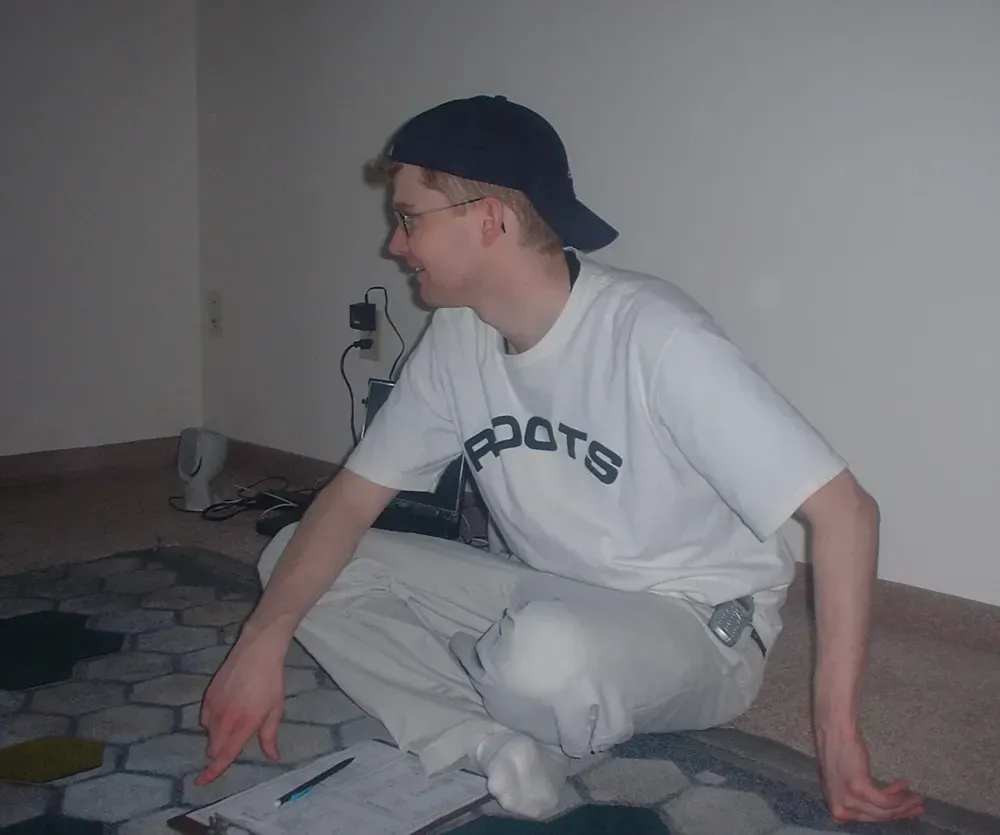
Talk about jumping in at the deep end: my first assignment was to write a fluid solver. Drawing on Jos Stam's 1999 Stable Fluids paper, I had a 2D implementation working within three days. The team was impressed enough that they quickly moved me from the hostel to a hotel while I found proper accommodation and we agreed upon compensation (although I didn't have a signed contract until sometime later.) By January 2003, just five months later, I had not only built a 3D fluid solver but also written my first SIGGRAPH short paper about incorporating dynamic solid objects into fluid simulations. We were even showcasing GPU-accelerated simulations in NVIDIA's booth at SIGGRAPH that summer (thanks to collaborator Christopher Batty's hard work.)
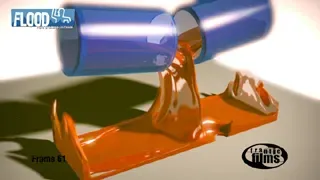
The Problem No One Was Solving Well
Fluid simulations are computationally intensive - some taking days to complete. To keep working while simulations ran, I built a simple distributed scheduler I called "Cloud." It let me run simulations on idle machines throughout the office, using a shared filesystem to coordinate jobs.
Meanwhile, Frantic Films was facing a different but related problem. They were using Autodesk Backburner to manage their render farm of about 60 machines for VFX shots on "The Core." Backburner was so unreliable that they literally had an employee working night shifts just to restart the server whenever it crashed. Without this human watchdog, they'd come in each morning to find failed renders and missed deadlines.
During a discussion about this problem in early 2003, we proposed to Chris Bond, the head of the VFX studio, that we should adapt my fluid simulation scheduler, Cloud, into a render farm manager. The team quickly came to an agreement and we split up the work: Mark Wiebe would write plugins for 3D software like Maya and 3ds Max, while I handled the slaves, the swarm scheduler, and user interface. Bobo Petrov, a 3DS Max scripting genius, worked on the 3DS Max submission interface.
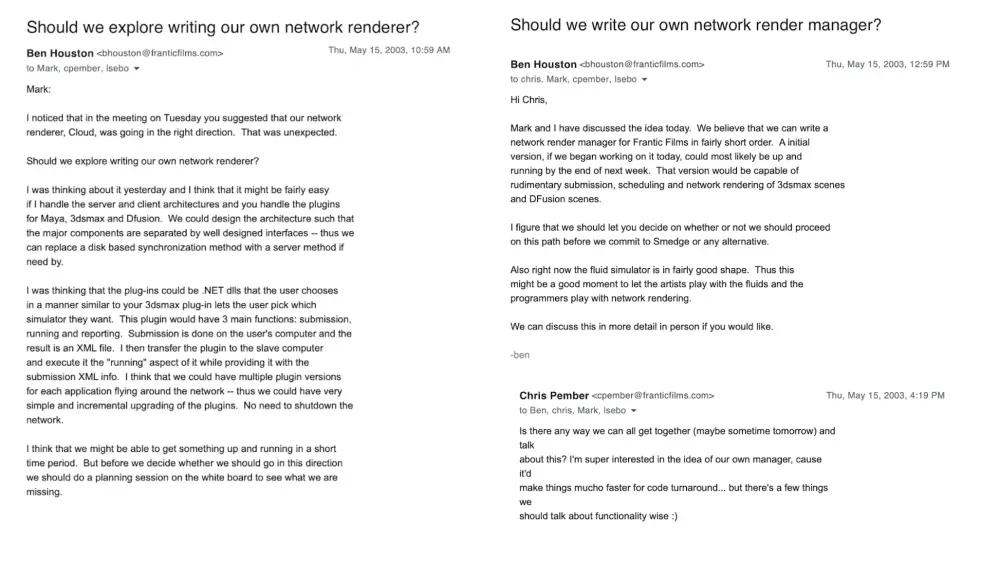
Also, as you can see in the above initial emails, one of the biggest supporters of Deadline from the start was Chris Pember, a 3D generalist at Frantic Films. He was a never ending source of good ideas and support.
Engineering Philosophy: Embrace Simplicity
The key insight came from observing Backburner's failures: complex central servers were a single point of failure. Instead of building another one, we used the Windows file system itself as our database. File renames handled locking, and timestamps managed health checks. Workers ran stochastic cleanup of orphaned jobs. It wasn't fancy, but it was robust.
We deployed this system, now called Deadline, at Frantic Films within a few weeks. No more overnight babysitting required.
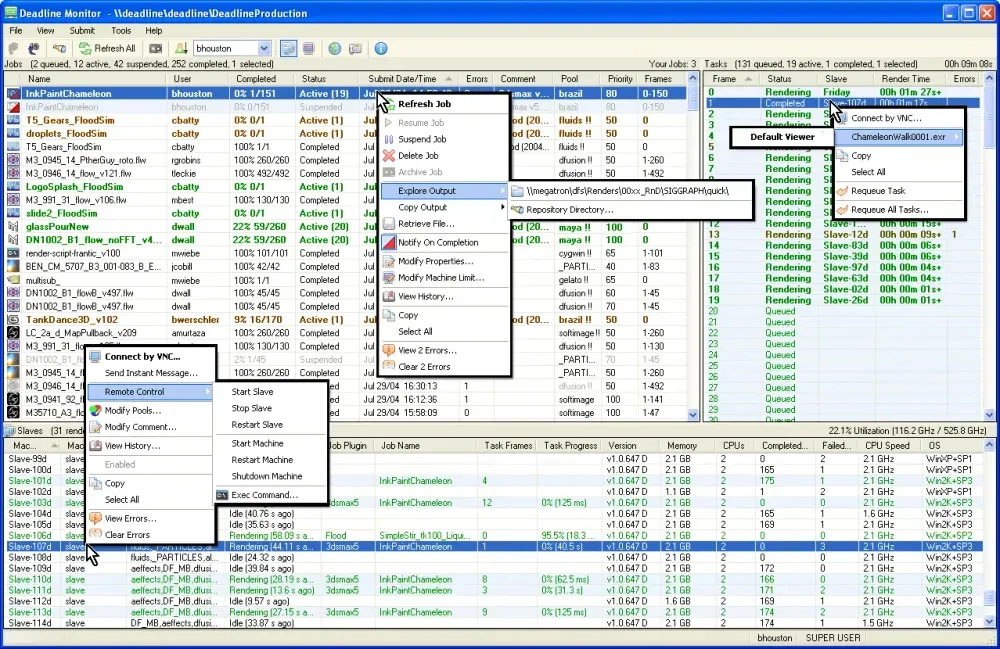
From Internal Tool to Industry Standard
Our first big break outside of the studio came through Chris Bond, head of the VFX studio, who arranged for Blizzard Entertainment to become our first external user. John Burnett at Blizzard needed a reliable render farm manager for the World of Warcraft cinematics. Despite some initial hurdles, we, with a lot of help from John, got it working on their ~120 machine render farm. Our reward? A credit in the original World of Warcraft release as well as a great endorsement for our product launch:
"Deadline ™ made our network rendering problems a thing of the past." -Blizzard Entertainment

This success led to Frantic Films Software. Some worried we'd be selling our competitive advantage to other VFX studios, but the opportunity was too good to ignore. We ran a beta program in spring 2004 that engaged over 100 VFX studios and artists. This gave us crucial market research to shape our v1 feature set which we launched at SIGGRAPH 2004. It was around this time, we brought on Ryan Russell to become the permanent lead developer of Deadline.
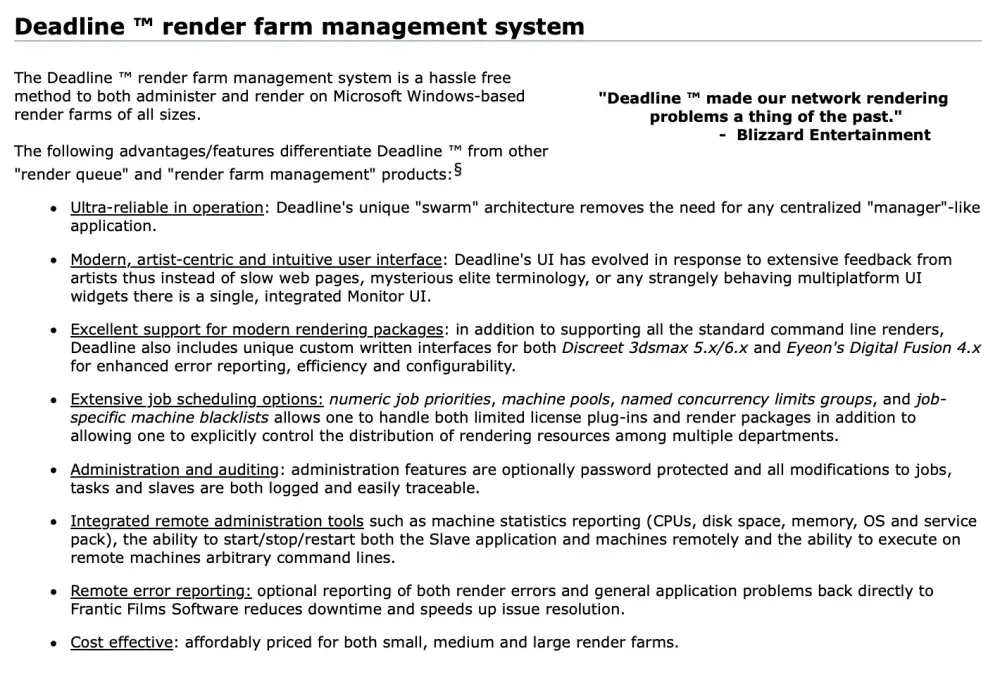
The response was tremendous. I was doing both the marketing and the sales at that time. So I personally closed all of our first customers include the then large Computer Cafe VFX studio in LA. And I also built out the first version of software.franticfilms.com website using a custom wiki syntax-based static site generator (before markdown static sites were cool!), filling it with documentation for both Deadline and our fluid solver.
Impact and Legacy
I left Frantic Films VFX in early 2005 to start my own company, Exocortex, wanting more control over my entrepreneurial destiny with a focus on just software, rather than software being a second fiddle compared to the VFX projects themselves. But Deadline's story continued. After some years under Prime Focus (who acquired Frantic Films VFX), Chris Bond created Thinkbox Software and acquired the Deadline IP. Under focused leadership, it exploded in popularity.
The impact has been staggering. Deadline has been used on hundreds of major productions: Harry Potter, Game of Thrones, Star Trek, Star Wars, Transformers - almost every VFX-heavy film of the past decade has had at least some shots rendered through Deadline. It's been considered twice for Academy Technical Achievement Awards (2006 and 2022), and while we didn't win, just being considered and presenting to the judges was incredible.
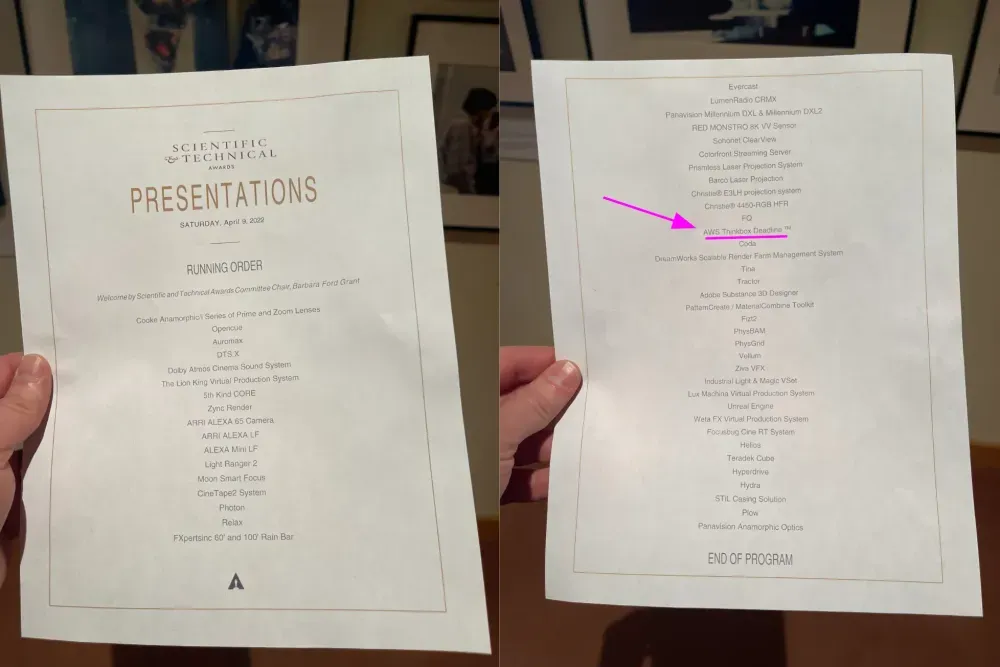
The final chapter came when Amazon acquired Thinkbox, seeing Deadline as key infrastructure for moving VFX rendering to the cloud - a strategic response to Google's acquisition of Zync.
Lessons Learned
Looking back at my first job out of university, I learned crucial lessons about building successful software:
- Solve Real Problems: We succeeded because we addressed actual pain points in production workflows.
- Simple > Complex: Our file-system-based architecture wasn't elegant, but it was reliable when everything else wasn't.
- Listen to Users: The beta program and survey helped us understand exactly what the market needed.
- Market Size Matters: We focused on render farm management over fluid simulation because every VFX studio needs to render, while only some need fluids.
Most importantly, I learned that you don't need to start a traditional startup to have massive impact. Sometimes the best opportunities come from solving problems right where you are, even if that's inside another company.
I'm incredibly proud that software I created as my first job out of university has helped create some of the most visually spectacular films of the past two decades. It's proof that with the right problem, the right solution, and the right timing, you can build something that changes an industry.
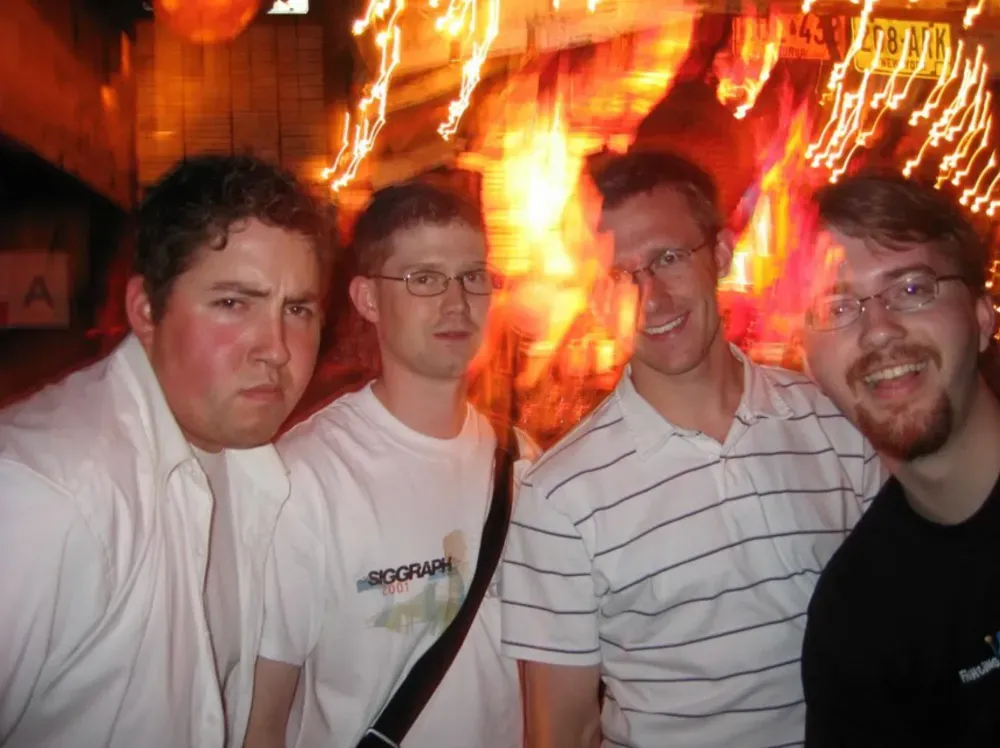
This post was discussed here on Linkedin and here on Reddit.